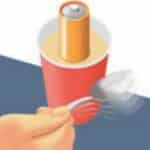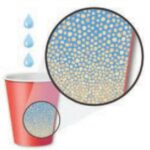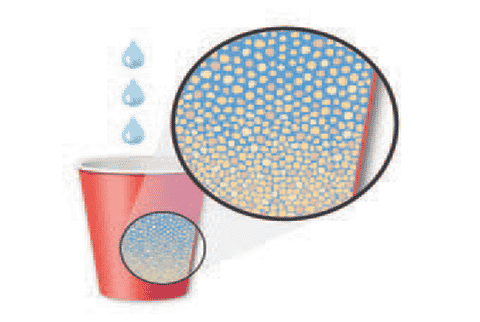Overview
STEM careers
Grade level
Topic
Time
Materials
Per Small Group:
- Sand
- D, C, or 9-volt battery (not AA or smaller)
- 3 paper cups, 5- to 8-ounce size
- Water
- Spoon
- Drinking straws
- Toothpicks
Instructions
Students see liquefaction in action and realize that for buildings to withstand an earthquake, they need a stronger foundation or other techniques to stabilize them.
- Ask the class about their experience with earthquakes.
- Explain the problem with liquefaction: Many buildings are built on landfill, sand, or mud that can liquefy. Liquefaction causes much of the damage during earthquakes.
- Distribute a paper cup of dry sand to each student group. Tell them to set a battery vertically on top of the sand. Tell students: Do not shake the sand in the cup.

- Students should try to knock the battery over by drumming gently with a spoon about halfway up the side of the cup.
- Next, give each group a new cup of sand and a cup of water. Add the water to the cup of sand in small amounts, pausing to let the sand absorb it. Explain to students: You may see bubbles on the sides of the cup. This means the sand is still absorbing water. When the sand no longer absorbs the water, it means nearly all the spaces between the grains are full of water. But the sand still looks solid.

- Stand a battery on top of the wet sand and try to tip it over the same way as before.
- Discuss the results, focusing on what is happening between the particles of sand and the water pressure.
- Ask students if they can think of a way to stabilize the battery so that it won’t topple over, even on the wet sand mixture. Pass out toothpicks and straws and give students time to experiment. Note: Students should make sure that the “piles” (toothpicks and straws) reach to the bottom of the cup without touching the battery.
Guiding questions
-
Is it easier to tip the battery over on dry sand or wet sand? Why do you think that is?
-
What’s the best way to keep the battery from toppling over, whether the sand is wet or dry?
-
When you drum on the side of the cup of dry sand, why doesn’t the movement topple the battery?
-
If a plot of ground appears to be solid, with no water in sight, how can an earthquake make it liquefy?
Engineering & science connections
- Liquefaction is when soil becomes saturated with water and temporarily loses strength and acts as a fluid. Liquefaction is most often caused by vibrations from earthquakes. Once liquefaction has occurred, the soil is not able to support the foundations of structures. In earthquake-prone areas, engineers make sure structures can withstand the liquefaction process. One technique developed by an engineer in Mexico City is to use a glue-like “wallpaper” on existing buildings and bridges to strengthen them. Another method engineers use to stabilize buildings is by driving piles, or post-like structures of timber, steel, or concrete, into the ground.
- Earthquakes push and pull horizontally (sideways) on structures. To stabilize buildings against earthquakes, engineers use solid walls of reinforced concrete or masonry—called “shear walls”—which have great stiffness in the horizontal direction. The First Interstate World Center is a 73 floor skyscraper in Los Angeles with a solid concrete core right up the center of the building, allowing it to withstand an earthquake of magnitude 8.3 on the Richter scale.
- Interestingly, a method for preventing liquefaction in the ground under structures is to use sand compaction piles. Engineers place very dense columns of sand in soft ground. The moisture in the surrounding soil helps the piles become dense and strong, almost like concrete.
This activity is from the American Society of Civil Engineers.


0 Comments